Final report for FS17-302
Project Information
Soils in the Southern United States are notoriously low in fertility and organic matter. Methods for maximizing cover crop value need to be identified and adopted by Southern farmers. Winter annuals are by far the most commonly planted cover crops because they can be grown without interrupting the production of most agronomic and horticultural crops. However, summer annuals can produce significantly more biomass than winter annuals, thus providing additional benefits of cover crops. Summer annuals have the added benefit of disrupting insect pest, disease, and weed life cycles when those problems are at their peak in the South. A summer annual cover crop will change the typical crop rotation employed by most farmers, but will produce more biomass than the winter annual and thus have a greater impact on soil productivity. Cover crops are an important part of sustainable agriculture in their own right, but research has shown that incorporating livestock into cover crop rotations can magnify the impact of this practice. Livestock have been shown to increase biodiversity (especially in microorganisms), improve nutrient cycling, and speed the breakdown and incorporation of organic matter. This is a major benefit to agronomic and horticultural crop farmers, but there are also benefits for livestock farmers. In addition to poor soils, farmers also face the challenge of limited access to farmland, especially land suitable for livestock. If crop land were made available for livestock grazing for periods of the year, it would increase land access for livestock farmers. This would be particularly valuable to beginning or limited resource farmers who could begin without purchasing additional land. Economic benefits for crop farmers may come from the addition of livestock to an existing operation or by renting grazing land to nearby livestock farmers.
To create a model for the use of summer annual cover crops, a livestock farmer will partner with an agronomic crop farmer to develop a system that achieves both of their goals: forage for the livestock farmer and improved soil health for the crop farmer. The perspective of both farmers will be used to measure the value and weakness of the model and build on it in the future. Economic feasibility will be measured by keeping a detailed enterprise budget for the livestock operation based on enterprise budgets from Virginia Tech. This budget will provide the basis for the benefit to the livestock farmer as well as potential rental rates for the crop farmer. To measure changes in soil health, Sunn hemp (Crotolaria juncea) and Sorghum-sudangrass (Sorghum bicolor x S. bicolor var. sudanese) will be planted in separate treatments as cover crops. These crops were chosen based on their success growing in the area and their suitability for grazing. Using two crops will account for potential crop failure, and will also provide a useful comparison and demonstration. Treatments will include Sunn hemp (grazed and ungrazed) and Sorghum-sudangrass (grazed and ungrazed) across three replications, for a total of 12 randomly assigned plots. Each plot will be one acre in size. To measure changes in soil properties with respect to soil health, soil tests were submitted to the University of Georgia labs, measuring pH, extractable P, K, Ca, Mg, N, and organic matter. Soil respiration, a measure of microbial activity, was measured using the Solvita CO2 Burst test. Compaction, a concern with the use of grazing animals and a potential negative outcome of this system, will be measured using a soil penetrometer already owned by the farmer. These measurements will be taken before the experiment begins to establish baseline soil health. Data will be taken again at the end of each cover crop cycle, before the land is planted in a winter small grain. This experiment will include two cover crop cycles and two small grain crops over the course of two years.
Cooperators
- (Educator and Researcher)
- (Educator and Researcher)
- (Educator and Researcher)
Research
Before planting the experiment began, a field was divided into 12 plots. A soil test was taken from each plot to get a baseline measurement of soil fertility, and soil compaction was measured using a penetrometer.
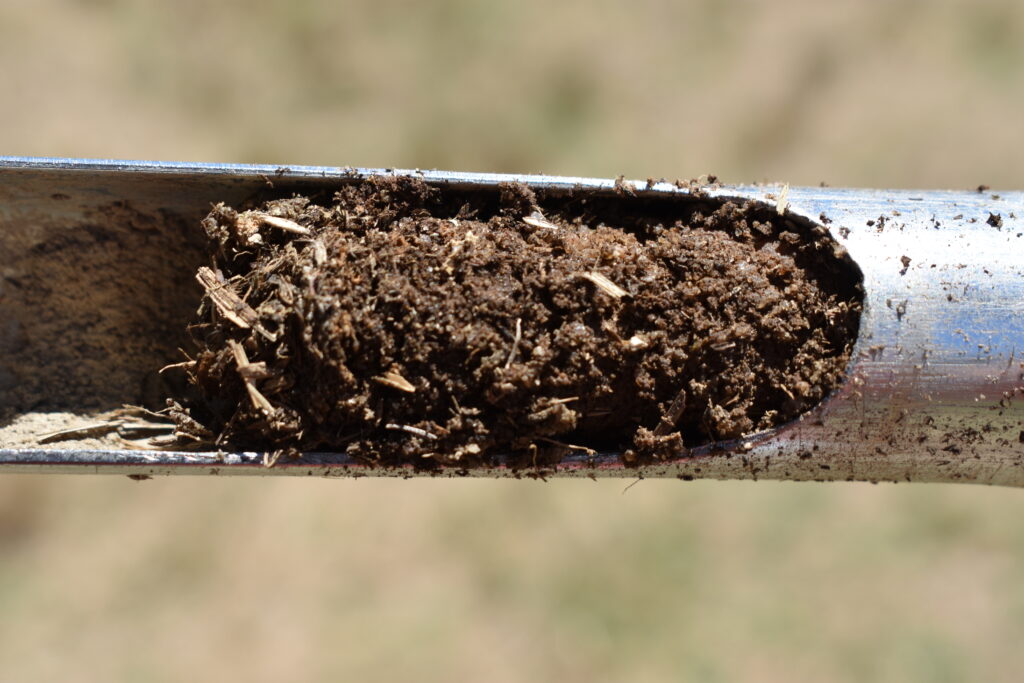
In May, the farmer drilled 12 plots - 6 of Sunn Hemp and 6 of Sorghum Sudan.Mature ewes grazed three plots of Sorghum Sudan and three of Sunn Hemp, leaving the rest ungrazed to determine the interactions of livestock with soil health.
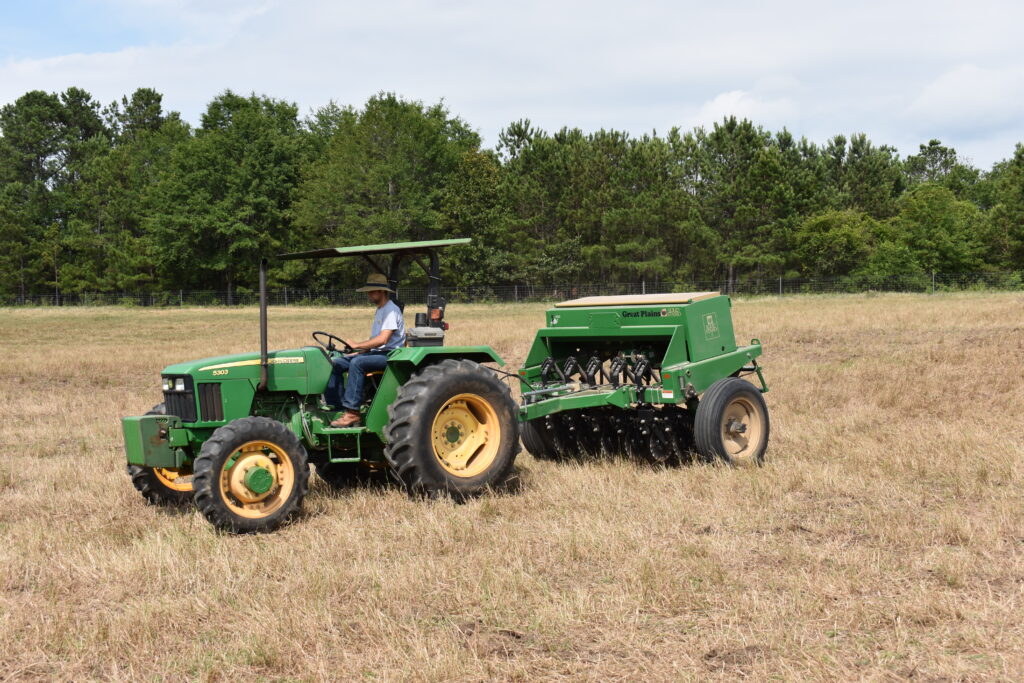
Sheep were introduced on June 22, 2017, when the Sunn Hemp had reached a height of about 24 inches and the Sorghum Sudan had reached about 36 inches.
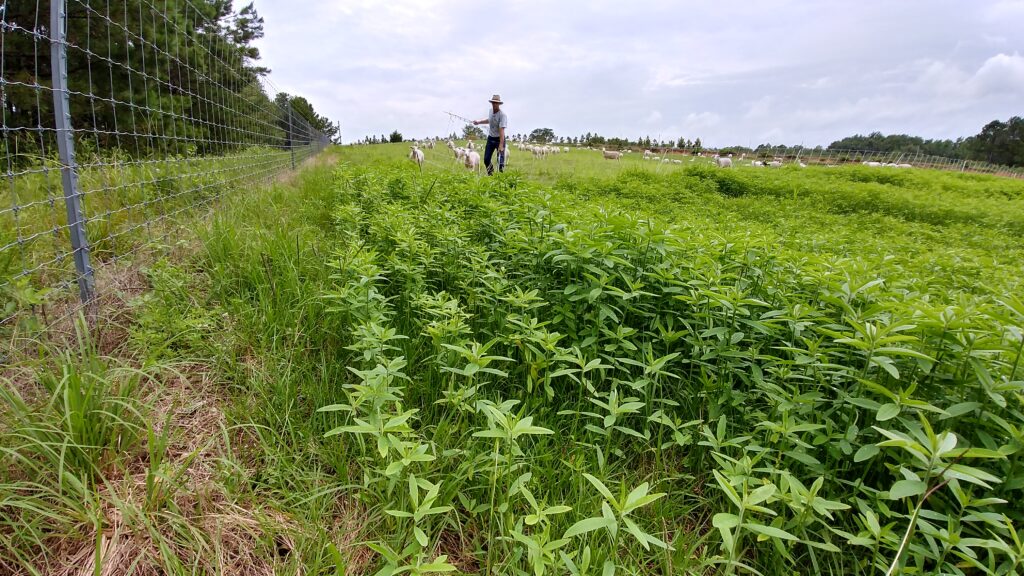
Sorghum Sudan was less resilient to grazing than Sunn Hemp, which branched prolifically after being grazed. Finding the proper grazing interval for Sunn Hemp was one of the major challenges to maximize harvest before plants reached above the grazing height of sheep. Also, once the Sunn Hemp set seed, the farmer noticed negative impacts from the sheep grazing the seed heads. It's unclear if the effects were directly caused by the consumption of Sunn Hemp seed, which are toxic when consumed in a great enough quantity.
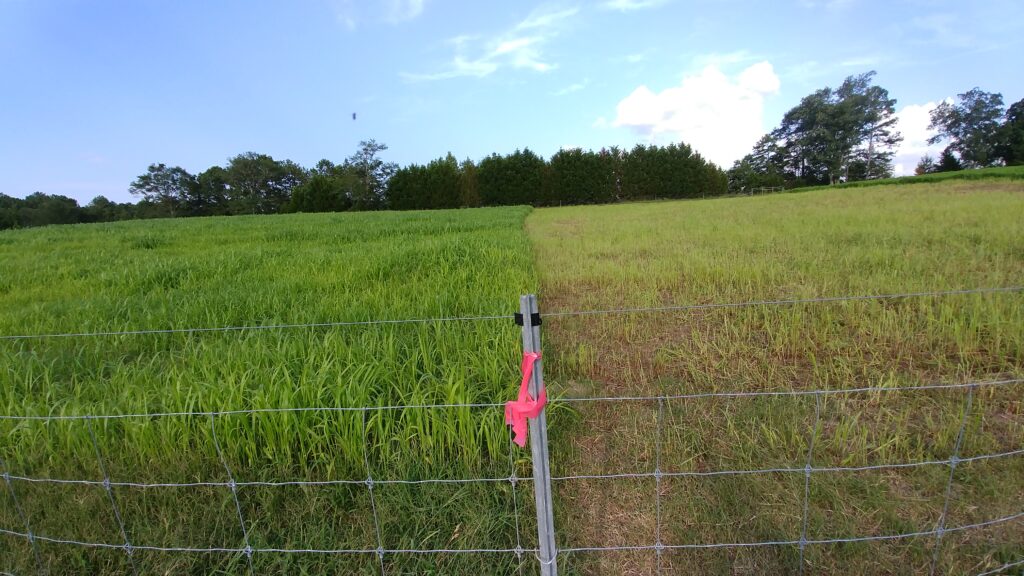
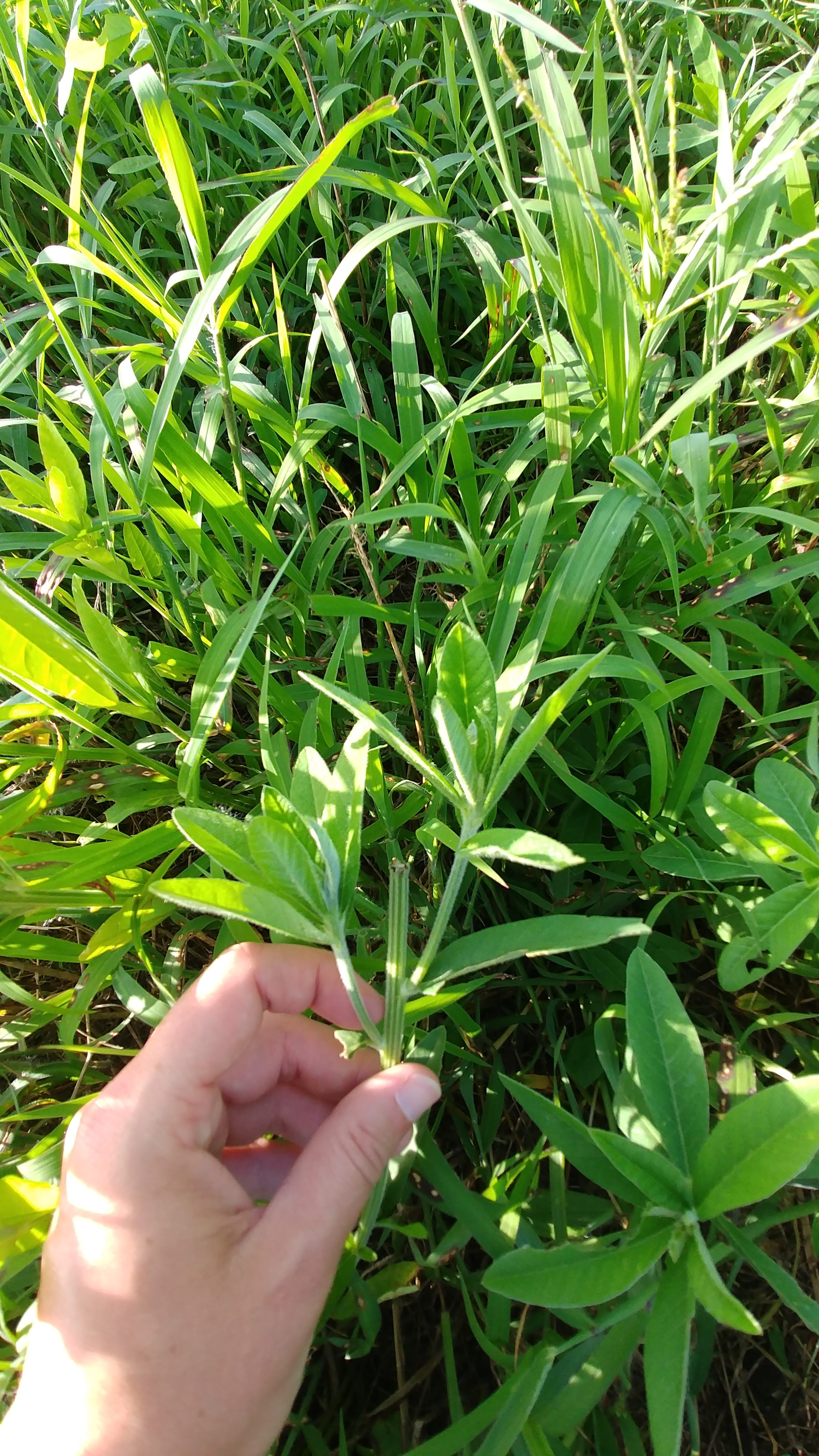
In the fall of 2017, all plots were bush hogged to terminate the crop and oats were drilled. Oats were fertilized according to recommendations from soil tests. Visual inspection showed a much more vigorous oat crop on the former Sunn Hemp plots than the Sorghum Sudan plots, which is likely due to Sunn Hemp being a legume.
The methods were repeated in 2018, followed by a winter crop of ryegrass which was harvested the following spring for hay.
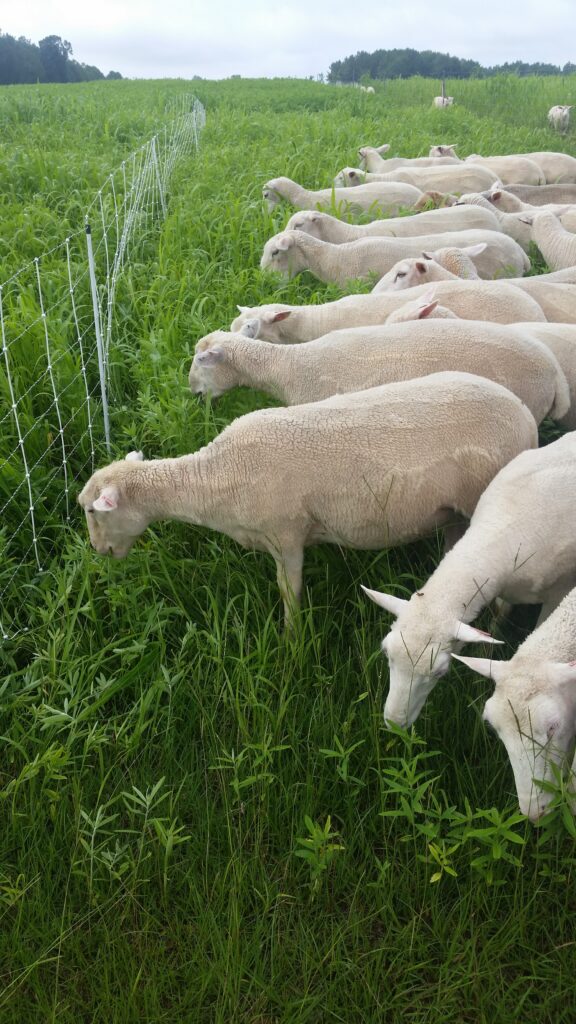
Grazing cover crops did not damage soil health. The farmer used a penetrometer to measure average depth in inches to 300 psi, at which point compaction limits root movement. No significant increase in compaction was found on the deep sand soils while grazing sheep over two years. Other measures were used to assess soil health, including pH, extractable P, K, Ca, Mg, and organic matter. Soil pH, measured nutrients, and organic matter all remained the same throughout the study. It is possible that these measures may change over a longer period of time, but no short term changes should be expected in this system.
Weight gain was not measured in this study, and the number of days of grazing varied between cover crops. Sunn Hemp typically provided about twice as many days of grazing as Sorghum Sudan, but this varied by year. The primary benefit of the cover crop to the livestock farmer was the high quality forage produced at a time of year when perennial pastures are not at their peak, reducing stress on animals and pastures.
The farmer utilized several specific pieces of equipment that he believes would be necessary to utilize cover crops for grazing, including portable nets and water troughs. The number of portable fences necessary will vary according to the size of the field, but cost about $100 for 85'. An electrical source must also be provided, which may cause additional costs. Portable water tanks are also necessary, and cost about $100 for a 100 gallon tank. If water is not available on site, this would again cause additional costs for transport. The farmer estimated that he gained about 120 days of rotational grazing from the sorghum-sudan/sunn hemp cover crop mix. Based on USDA National Agriculture Statistics Service pasture rental rates in Alabama, this would translate to about a $7/acre rental rate for the cover crop season. For many small growers, this would not be enough to translate to real income. These farmers might see more value in integrating their own livestock component within their operation. On the other hand, larger farmers, particularly in row crops, may be able to take advantage of rental income to livestock farmers without the concern of negatively impacting soil health.
If soil health is not affected by grazing cover crops, farmers must carefully consider the value of utilizing a more complex system. Increasing forage potential could provide greater livestock gains, while collaborating with a livestock farmer might provide rental income. However, integrated livestock-crop systems demand intense management to be successful. If farmers are to adopt this potentially valuable system, they need to understand its complexity and the full breadth of its costs and benefits. Maintaining soil health while adding another profit source seems like an easy choice, but remember that this system requires additional management. Livestock must be rotated through the crop to ensure that forage meets their nutritional needs. Even if the farmer intends to terminate a cover crop and not achieve multiple forage rotations, animals need to be monitored and moved as necessary. In our study, additional portable equipment including fences and water troughs were essential.
This study proved informative to growers in our region and beyond who are interested in increasing the value of their cover crops. Additional studies with other cover crop species, other livestock species, and collaboration between farmers would all provide useful knowledge to sustainable farmers. Based on the knowledge gained in this study, Mr. Randle plans to continue planting summer annual cover crops for grazing, particularly sunn hemp. He has also consulted with several farmers in the Southeast who are interested in utilizing summer annual cover crops.
Educational & Outreach Activities
Participation Summary:
Articles describing the project were published in the University of Georgia Sustainable Ag Newsletter (Summer 2018) and Acres Magazine (September 2018), reaching an audience of 18,000.
Anne Randle led a webinar in cooperation with Rutgers Extension on the progress and findings of the project in 2018, reaching an audience of 89.
The experiment was discussed as a part of a field day for Auburn University agriculture students in 2019, reaching an audience of 20.
Franklin Randle also provided several tours of the field, reaching an additional 7 producers and Extension professionals.
Learning Outcomes
The farmer and several farmers in the community have learned about grazing interval on cover crops, weed competition with cover crops, and are considering the potential of summer annual cover crops pared with winter annual cash crops. Results of the study were shared with an audience of over 18,000 through trade publications, newsletters, and online webinars. This sparked several discussions between the team and farmers and educators around the world.
Project Outcomes
The farmer plans to continue the practice of grazing cover crops following this experiment. Additionally, two farmers adopted the practice of grazing cover crops as a result of this study. One farmer is experimenting with a vegetable/cover crop/poultry system, while another is experimenting with row crops/cover crops/cattle. Both of these farmers adapted the methods used in this experiment to fit their own operations.
The results of this system are not dramatic over a short period of time. However, the farmer was able to increase quality forage production by several months each year and still produce a winter annual small grain or hay crop. Since this study concluded, the market for conventional agronomic crops has become ever more volatile. Farmers see an increasing need to diversify with alternative crops and maximize the benefit of production systems. Grazing cover crops, particularly if integrated into an existing livestock operation, provides that opportunity to increase forage production without sacrificing soil health, agronomic crop production, or animal productivity.
This system does come at an increased cost to livestock producers through cover crop seed, fertilizer, and potentially rent. For row crop producers, it may come at the expense of an summer annual crop. It also requires special equipment to transport and manage animals. Grazing cover crops will not be appropriate for every farmer, and may work best on operations that already involve livestock and row crop production.
More information is needed on cover crop production, particularly forage quality and seeding rates for forage production.